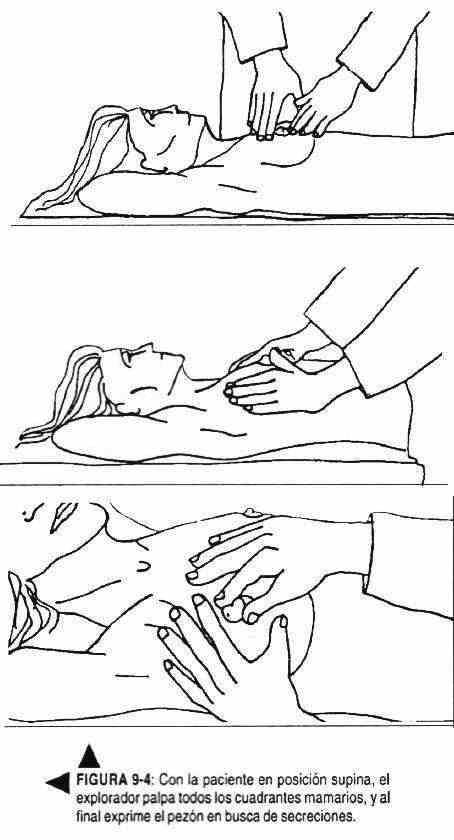by Alberto J. Muniagurria and Eduardo Baravalle The breast examination is a procedure that includes inspection and palpation. In turn, it should serve as a teaching for each woman to carry out her own self-examination, which must be carried out periodically.
The normal breast can show variations according to age, nutritional status, relationship with the phases of the menstrual cycle, etc. In young patients the breast is elastic, firm and cone-shaped, and the nipples are clear. The boundaries of the breast tissue are easily recognized and the breasts can be moved over the anterior rib wall. In elderly patients, the breast is pendulous, it has lost turgor and the limits are less precise. In obese patients the breast is large and pendulous, while in thin patients it is small. During the menstrual cycle, the breast becomes more sensitive to palpation, with changes in turgor.
Normal breast tissue may have generalized nodularity. Pregnancy is accompanied by pigmentation of the nipples.
Many women may be ashamed to admit that they are not doing their own self-exam. The way to approach this topic is by asking if they have been taught about the method. Other women feel they are too young to be at potential risk.
The risk must be clarified to them. The purpose of the routine examination and the importance of recognizing changes or abnormalities in normal tissues should be explained. The breast exam is a reassurance of health and not a search for disease.
The self-examination should be performed every month, in the postmenstrual period, thus avoiding the turgidity and soreness of the premenstrual period.
It may be helpful for a woman to self-examine during a first cycle, every week, to recognize the changes that occur in breast tissue during different phases of the menstrual cycle. From then on it will be done on a monthly basis. The patient should do her first self-examination in the presence of the professional. If you have performed the breast self-exam, you should be asked about the finding of abnormalities. A patient who has discovered abnormalities is often afraid to discuss her problem, waiting for her doctor to discover them.
Sitting position The patient should lie with her arms at her sides (Figure 9-1), and her breasts will be visually examined for symmetry, size (demonstrating estrogenic effects), contours, sags, or masses. The nipples should also be inspected, describing their color and shape, and observe for secretions. Similarly, this part of the examination should be performed by the patient at home and in front of a mirror.
The breasts will also be examined with the mobilization of different muscle groups, in search of adhesions. The patient is asked to raise her hands above her head (Figure 9-2) and then lower them. He should also be asked to put his arms in a jar (Figure 9-3) and to apply pressure to the waist, and ask him to bend forward to observe the breasts.
The armpits, supraclavicular recesses, and breasts should also be palpated in a sitting position.
Supine position. It is performed with the patient covered from the waist down (Figure 9-4), with the arms behind the neck, and with a pillow under the shoulders. The flat part of the fingers will be used, applying firm pressure on the thorax. The breast should be divided into four quadrants, taking a good look at the tissues around and below the nipple. Also, it is necessary to know how to distinguish the fine glandular tissue and the irregular consistency of the normal breast. The breast should be squeezed for secretions, and the patient has questions to ask. You may be advised to do your self-exam with a soapy hand during the bath.
